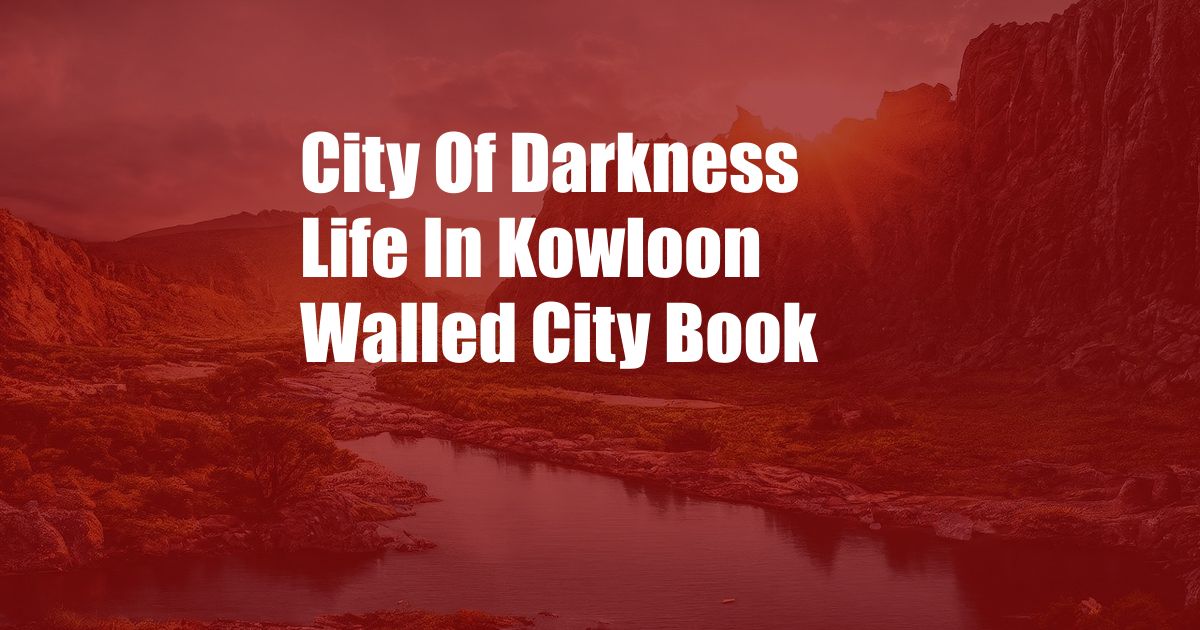
City of Darkness: Life in Kowloon Walled City
In the heart of Hong Kong’s bustling metropolis, a forgotten realm once existed, a labyrinth of concrete and steel that defied the norms of society. Kowloon Walled City, a former military fortress, transformed into a sprawling city within a city, a microcosm of human ingenuity and desperation.
Within its claustrophobic confines lived an astonishing 33,000 souls, packed into a space no larger than a football field. It was a microcosm of chaos and order, a society that evolved its own unique rules and customs, both fascinating and terrifying.
A City of Lawlessness and Ingenuity
Kowloon Walled City was a haven for those who sought to escape the reach of the law. It became a sanctuary for criminals, drug addicts, and refugees. The absence of government presence allowed for a thriving black market and a culture that embraced the taboo.
Yet, amidst the lawlessness, there was also a sense of community and ingenuity. Residents developed their own systems of governance, sanitation, and healthcare. They built makeshift homes, schools, and even a makeshift hospital, adapting to their unique environment with remarkable resilience.
The Rise and Fall of a Unique Urban Experiment
Kowloon Walled City was a testament to the adaptability and resourcefulness of humanity. It was a place where the traditional rules of society were cast aside and new ones were forged.
However, the city’s unique existence came to an end in 1993, when the Hong Kong government finally demolished it. The reasons were multifaceted, citing concerns over crime, health hazards, and the need for urban renewal.
Latest Trends and Perspectives
While Kowloon Walled City no longer stands, its legacy continues to fascinate and inspire. Social scientists, architects, and policymakers have studied the city as a unique experiment in urban living.
Recent discussions on urban renewal and the challenges of overcrowded cities have rekindled interest in Kowloon Walled City. Some argue that its self-organized and highly dense living arrangements offer insights into sustainable and resilient urban forms.
Tips for Exploring the Legacy of Kowloon Walled City
For those interested in delving into the history and impact of Kowloon Walled City, there are several resources available:
- Visit the Kowloon Walled City Park: Located on the former site of the city, the park offers a glimpse into its history with interactive exhibits and historical materials.
- Read “City of Darkness: Life in Kowloon Walled City”: Greg Girard and Ian Lambot’s award-winning book provides a comprehensive account of the city, capturing its unique atmosphere through stunning photographs and firsthand accounts.
- Engage with online forums and social media groups: Numerous online communities exist where enthusiasts share stories, insights, and historical materials related to Kowloon Walled City.
Exploring the legacy of Kowloon Walled City is not only a journey into the past but an opportunity to reflect on the complex challenges and opportunities of urban living in the 21st century.
FAQ on Kowloon Walled City
Q: Why was Kowloon Walled City demolished?
A: The Hong Kong government cited concerns over crime, health hazards, and the need for urban renewal as reasons for the demolition.
Q: What was life like in Kowloon Walled City?
A: Life in Kowloon Walled City was a complex mix of lawlessness and ingenuity. It was a haven for those seeking to escape the reach of the law but also developed a unique sense of community and self-governance.
Q: Can I still visit the Kowloon Walled City today?
A: While the original Kowloon Walled City was demolished, the Kowloon Walled City Park stands in its place. The park offers exhibits and historical materials that provide a glimpse into the city’s past.
Conclusion
Kowloon Walled City, a fascinating and paradoxical urban experiment, may be gone, but its legacy continues to provoke thought and inspire conversation. It was a place where the bright and dark sides of human nature intertwined, a reminder of the complexities of urban living and the ways in which societies can adapt and thrive in even the most challenging of circumstances.
We invite you to further explore the history and impact of Kowloon Walled City. Whether through books, online forums, or a visit to the Kowloon Walled City Park, there is much to learn from this unique chapter in the annals of human habitation. Would you like to know more about the topic you just read?